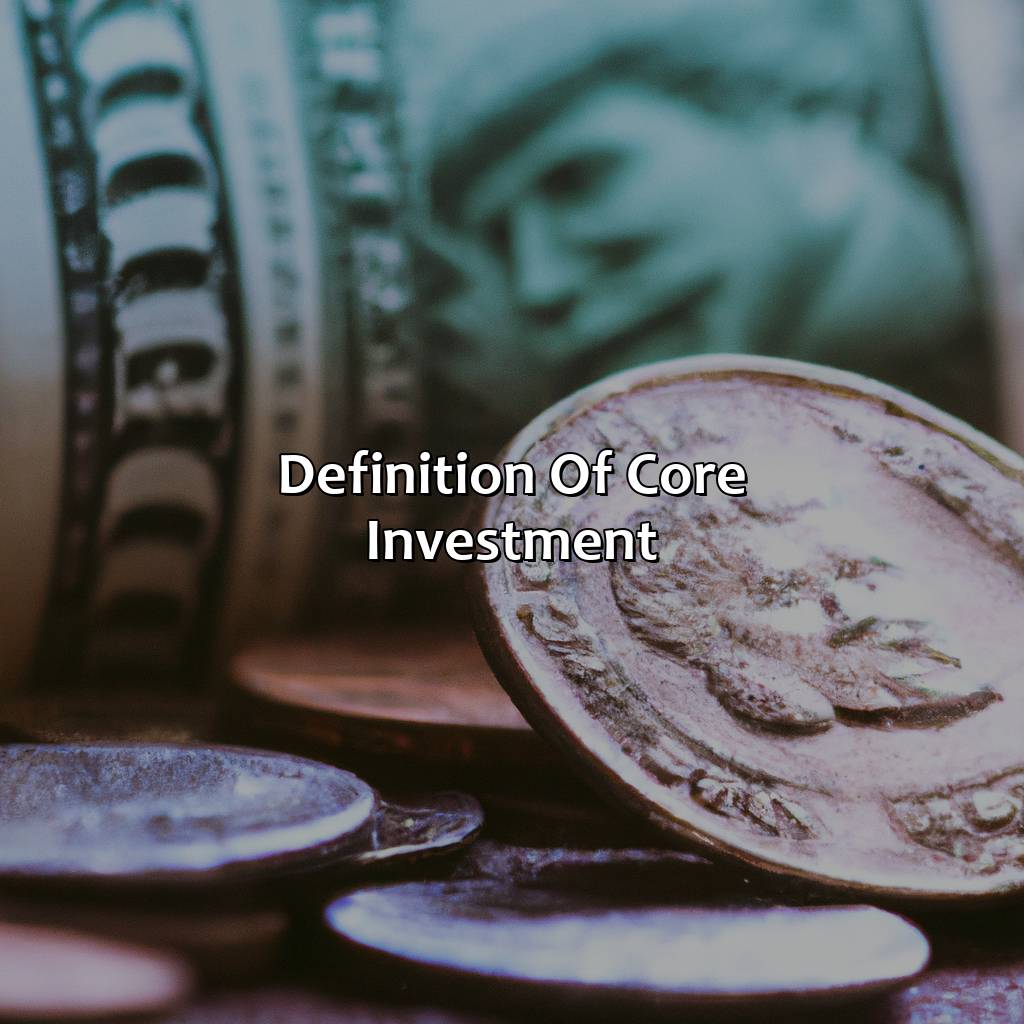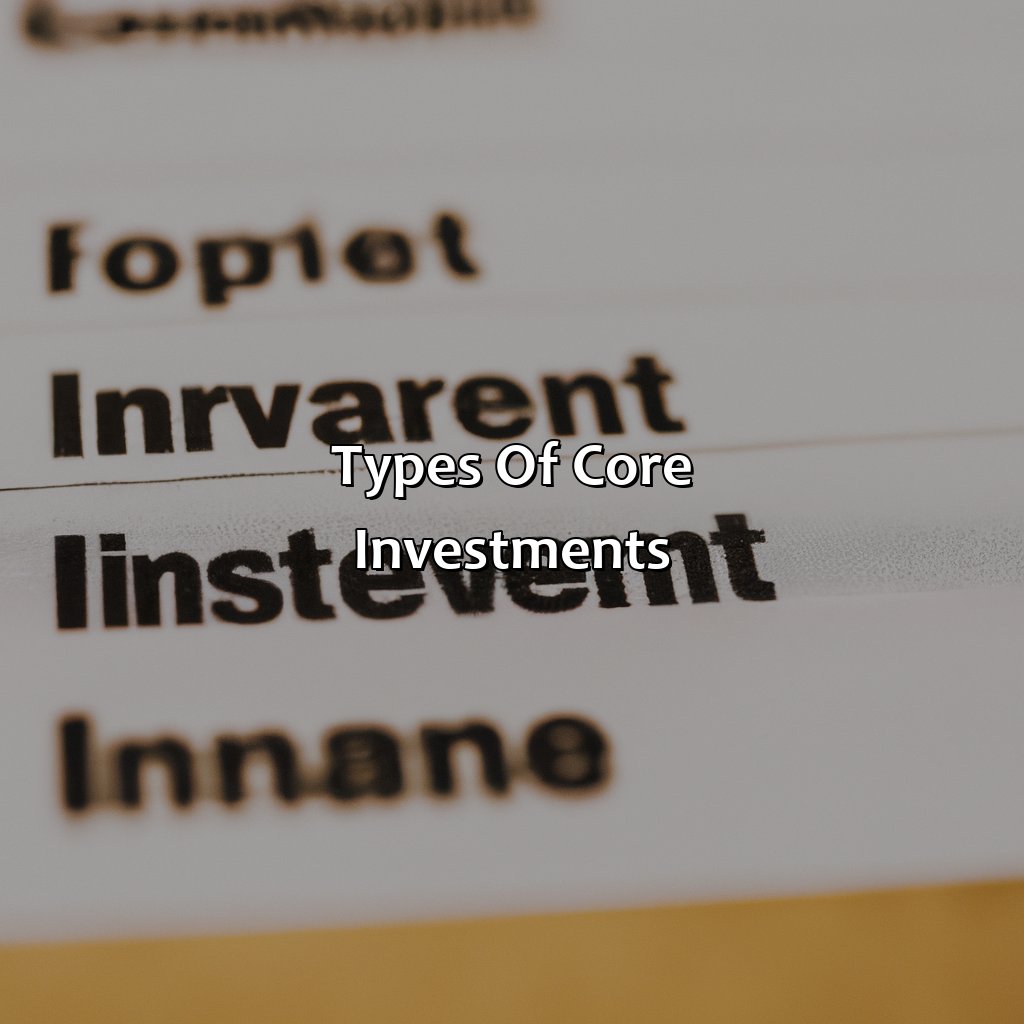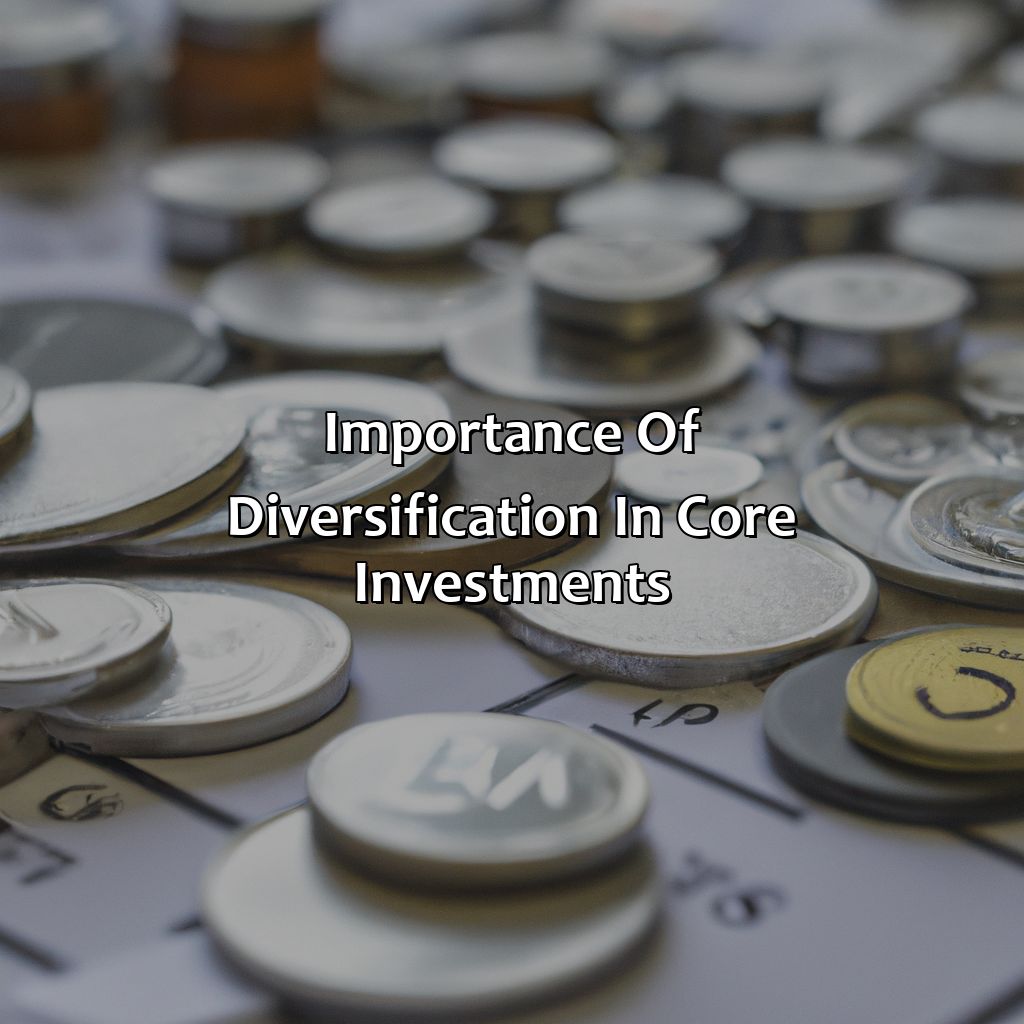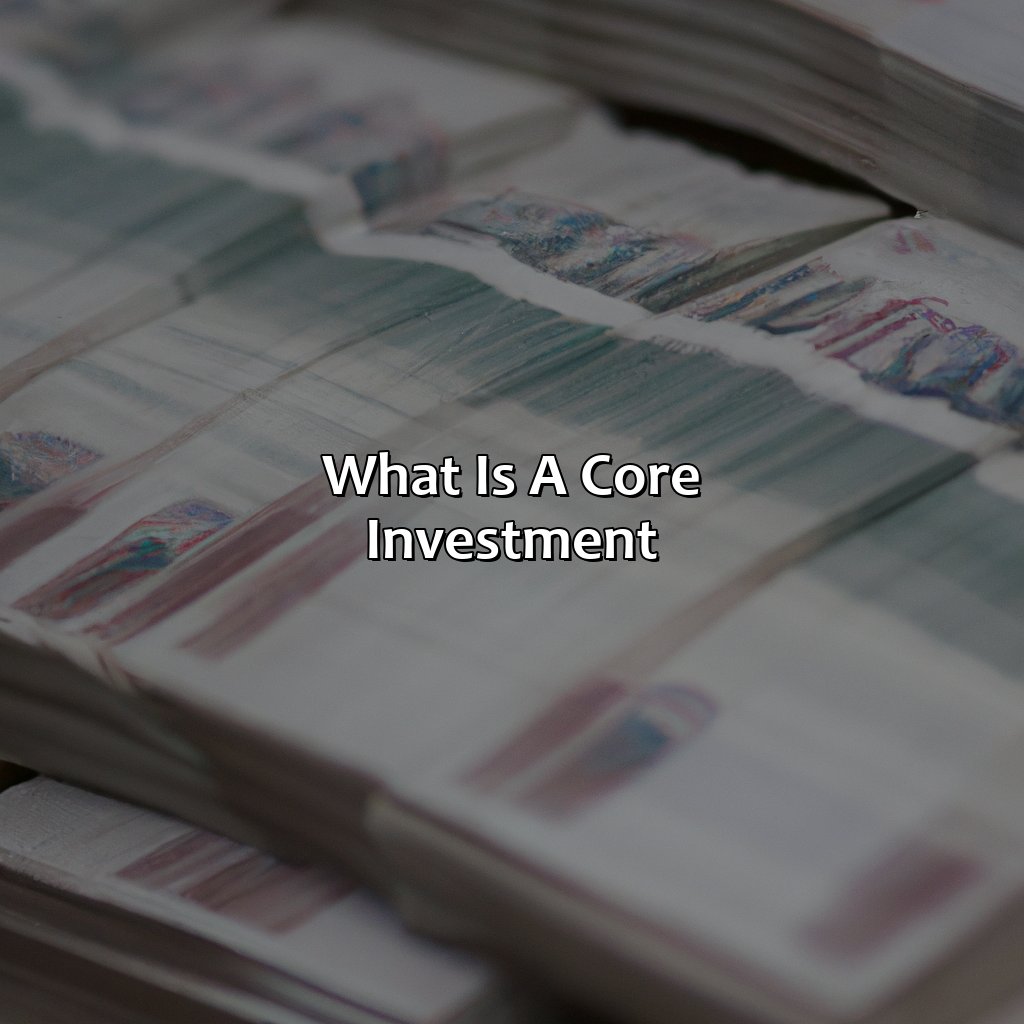What Is A Core Investment?
Key Takeaway:
- A core investment is a long-term investment strategy that aims to provide consistent returns over time with low risk.
- Types of core investments include property, stocks and bonds, and mutual funds, each with their own unique characteristics and risk factors.
- Factors to consider when choosing a core investment include risk tolerance, investment goals, and time horizon, all of which should be aligned with your personal financial situation.
- Diversification in core investments is crucial for minimizing risk and maximizing returns. A well-diversified portfolio should include a mix of asset classes and investment types.
Are you baffled by the concept of core investments? Don’t worry – we’ll help you understand the basics so you can make informed decisions. In this article, you’ll learn what a core investment is and why it’s important.
Definition of Core Investment
A core investment refers to a long-term investment in a company or asset that is essential to the investor’s portfolio. These investments have a stable revenue stream and low risk levels, ensuring consistent returns. Core investments typically fall within the conservative end of the risk spectrum.
Core investments include blue-chip stocks, real estate, and bonds. By diversifying holdings with core investments, an investor can effectively manage risk. Consider investing in core assets for long term growth and financial security. Don’t miss out on these essential investments.

Image credits: retiregenz.com by Yuval Washington
Types of Core Investments
Core investments refer to a set of assets that form a stable and reliable foundation for an investment portfolio. As an investor, it is crucial to identify the different types of core investments to mitigate the risks and maximize the returns on investment.
The following table displays the types of core investments that an investor can include in their portfolio along with their description, characteristics, and returns on investment (ROI).
| Type of Core Investment | Description | Characteristics | ROI |
|---|---|---|---|
| Equities | Stocks or shares of companies listed on stock exchanges | Volatile, high-risk, high-return | 7-10% |
| Bonds | Debt securities issued by governments and corporations | Stable, low-risk, low-return | 3-5% |
| Real Estate | Physical property, including residential and commercial buildings | Stable, tangible, long-term investment | 9-11% |
It is important to note that while the above-mentioned core investments make up the foundation of an investment portfolio, each type carries its own set of risks and returns. Therefore, it is advisable to consider personal investment objectives and risk tolerance before deciding on the allocation of core investments.
Investors must also diversify their portfolio by including other asset classes such as alternative investments, commodities, and currencies to further mitigate risks and optimize returns.
According to a report by Statista, the total assets under management in the global investment management industry amounted to $117 trillion in 2020.

Image credits: retiregenz.com by Joel Jones
Factors to Consider when Choosing a Core Investment
When selecting a primary investment, there are numerous factors to consider. First and foremost, one should think about their long-term objectives and risk tolerance. Secondly, they should assess the asset’s degree of stability, consistency, and predictability. Additionally, it’s essential to evaluate the asset’s historical returns, management team, company fundamentals, and liquidity. It’s crucial to be cautious and prioritize diversification to prevent concentration risk.
It’s also crucial to consider the asset’s liquidity and cost-effectiveness. Having assets that can quickly be converted to cash if necessary is essential in case of unexpected events. Keeping expenses under control is equally important because investment fees can reduce returns over time, and high management fees can hinder the asset’s overall performance.

Image credits: retiregenz.com by David Duncun
Importance of Diversification in Core Investments
Diversification is imperative for core investments; it limits risk exposure and enhances potential returns. By spreading funds across different sectors, asset types, geographies, and industries, investors can achieve a balanced portfolio. This is crucial since financial markets are volatile and can be impacted by local and global factors. Diversification ensures that investors don’t place all their eggs in one basket, safeguarding against substantial losses and promoting steady gains.
Moreover, core investments should be approached with a long-term strategy, and diversification translates into compounding benefits over time. Investors can adopt a customized approach that aligns with their risk appetite, financial goals, and time horizon. Like Warren Buffet famously said, “Diversification is a protection against ignorance. It makes very little sense for those who know what they’re doing.”
Interestingly, studies show that diversified portfolios tend to perform better than non-diversified ones. According to a report by Vanguard, “Asset allocation is the most significant determinant of a portfolio’s long-term performance.” By adopting a diversified investment strategy, investors can achieve higher returns at relatively lower levels of risk.
A recent article on Forbes revealed that in 2020, the top-performing core investments included the likes of technology, healthcare, and consumer discretionary sectors. Diversifying into these areas may have yielded significant returns for investors.

Image credits: retiregenz.com by Yuval Woodhock
Five Facts About Core Investments:
- ✅ Core investments are typically the foundation of an investment portfolio. (Source: The Balance)
- ✅ Core investments are low-risk, long-term investments that offer steady returns over time. (Source: Investopedia)
- ✅ Common types of core investments include index funds, mutual funds, and bonds. (Source: U.S. News & World Report)
- ✅ Core investments are meant to be held for the long-term, and should not be bought and sold frequently. (Source: Forbes)
- ✅ Core investments help to diversify a portfolio and minimize the overall risk of investing. (Source: The Balance)
FAQs about What Is A Core Investment?
What is a core investment?
A core investment is a type of investment strategy that focuses on acquiring long-term holdings in stable, well-established assets. These assets have predictable and consistent income streams, making them a low-risk option for investors. Core investments are often considered the foundation of a diversified investment portfolio.
What types of assets are considered core investments?
Core investments typically include real estate, infrastructure, and publicly traded stocks and bonds from established companies. These assets are considered stable and provide reliable, long-term returns that are less susceptible to market volatility than other types of investments.
What are the benefits of core investing?
Core investing offers several benefits, including steady, predictable returns over the long-term, passive income generation, and a lower risk profile than other types of investments. Additionally, core investments are often liquid and can be easily bought and sold as needed, allowing investors to quickly adjust their portfolio as market conditions change.
Are there any downsides to core investing?
One downside to core investing is the potential for lower returns compared to other investment strategies that take on more risk. Additionally, some investors may find the long-term nature of core investments to be less engaging than other investment options that offer faster or more volatile returns.
How can I implement core investing in my portfolio?
To incorporate core investments into your portfolio, you can focus on acquiring stable, established assets such as real estate investment trusts (REITs), dividend-yielding stocks, and high-grade corporate bonds. Additionally, you can work with a financial advisor or investment manager to develop a strategy that aligns with your risk tolerance and long-term financial goals.
What should I consider before investing in a core investment?
Before investing in a core investment, it’s important to conduct thorough research and due diligence on the asset in question. You should also consider your own risk tolerance, financial goals, and investment timeline to determine if a particular core investment aligns with your needs. Additionally, working with a financial advisor or investment manager can provide valuable guidance and support in making informed investment decisions.
